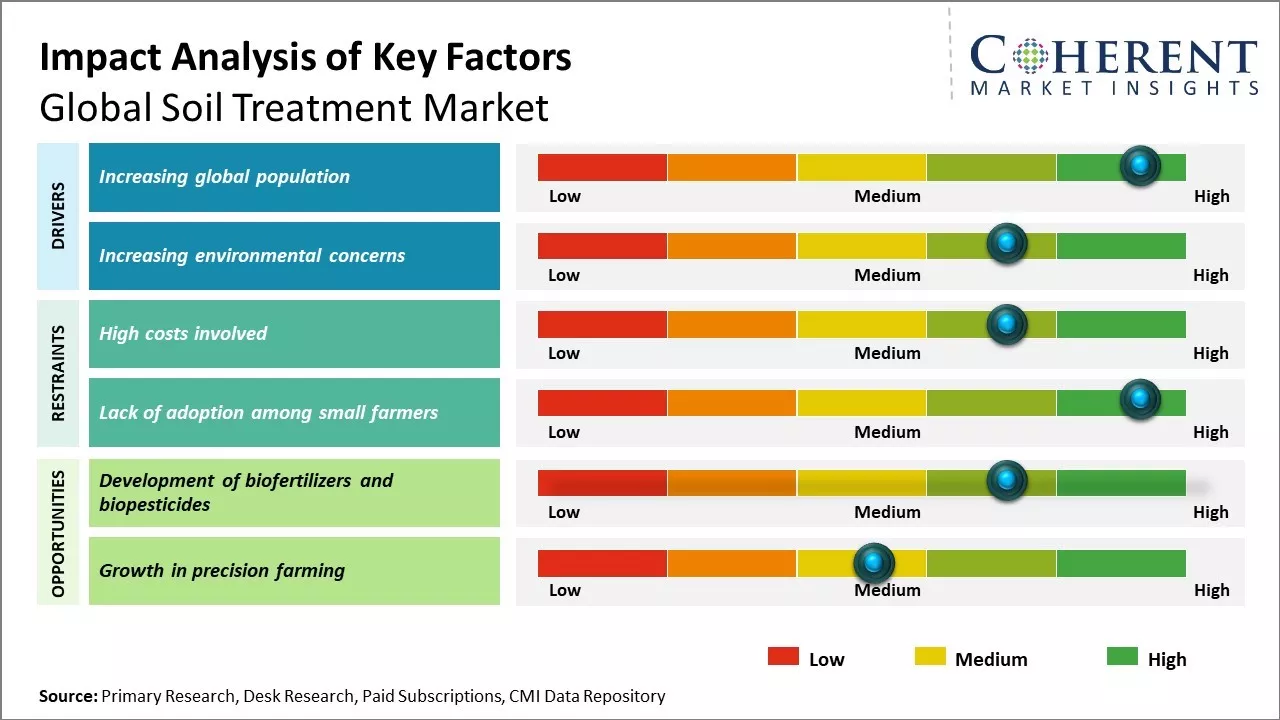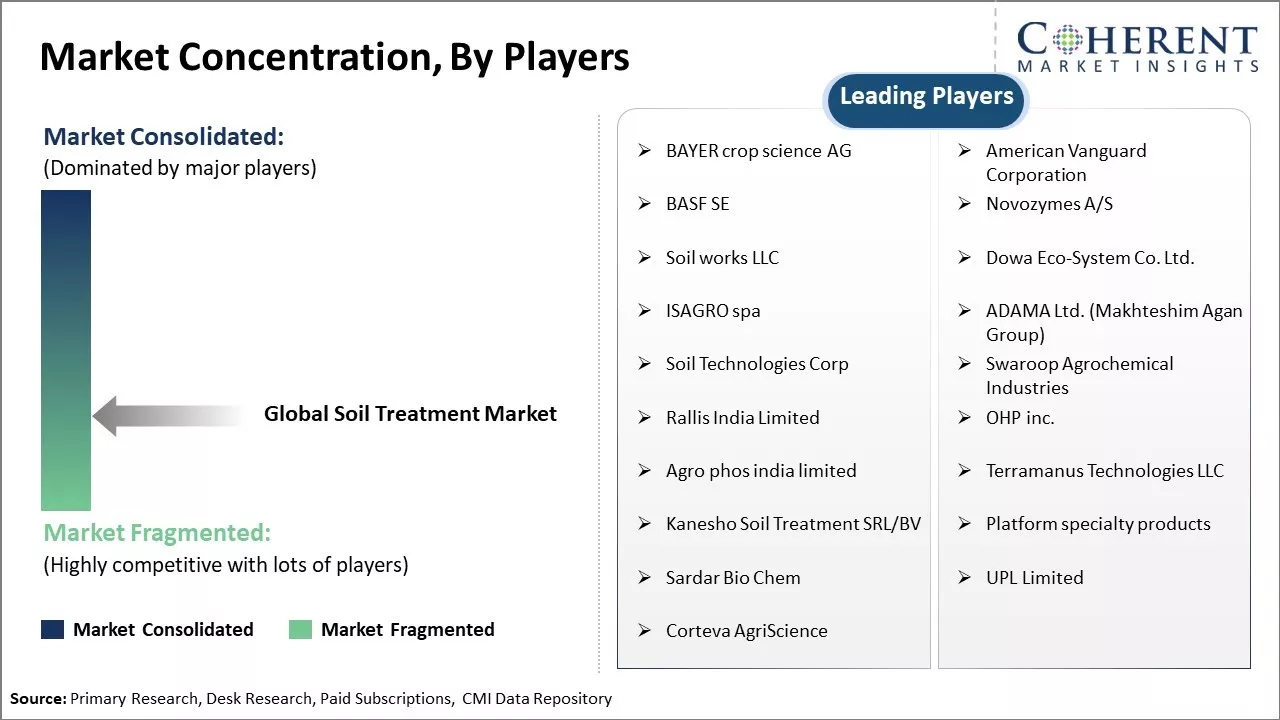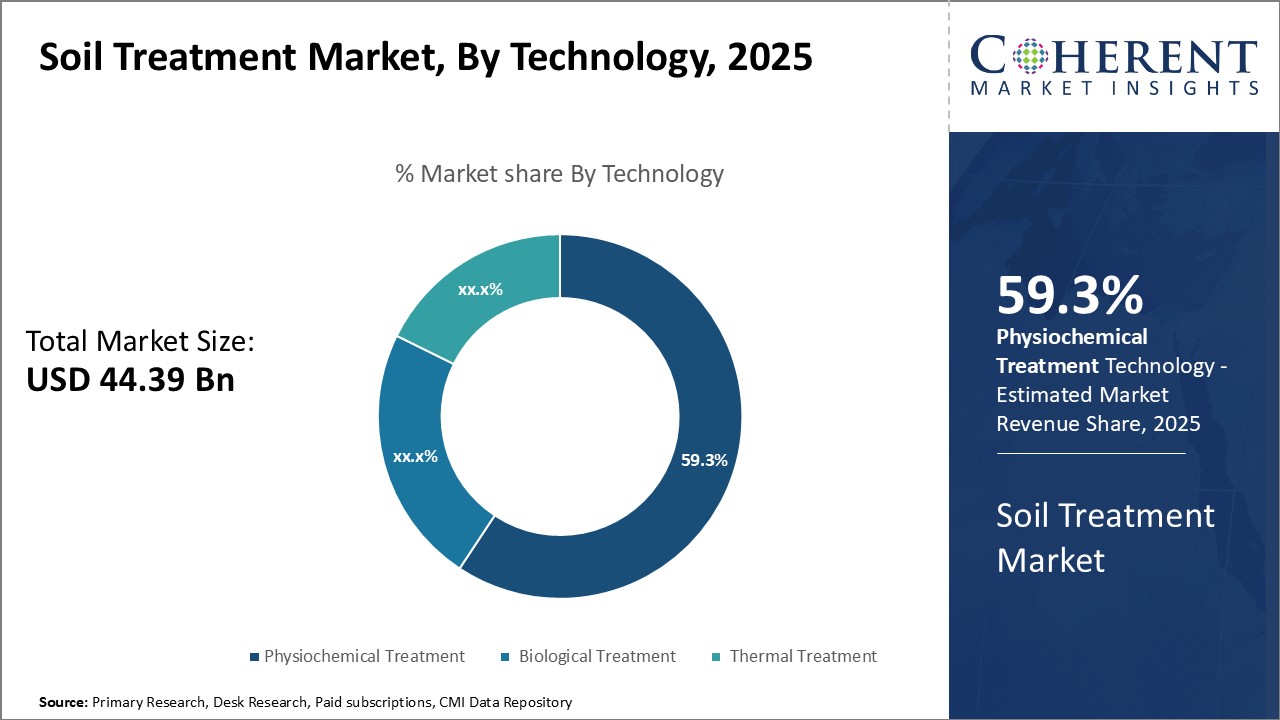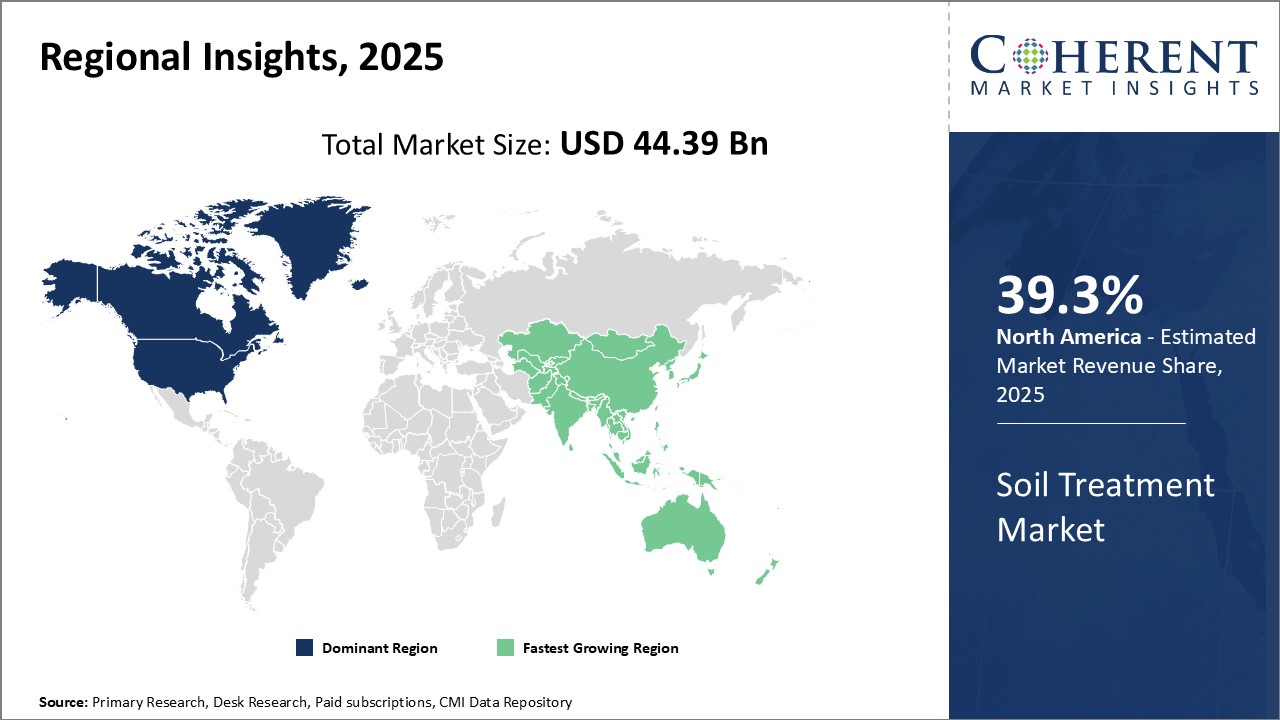The global soil treatment market is estimated to be valued at USD 44.39 Bn in 2025 and is expected to reach USD 63.76 Bn by 2032, exhibiting a compound annual growth rate (CAGR) of 5.3% from 2025 to 2032.

Discover market dynamics shaping the industry: Request sample copy
Factors such as increasing concerns regarding soil health and reduction of arable land are expected to drive demand for soil treatment products and solutions during the forecast period. The rising need to improve soil fertility and productivity is expected to boost the demand for soil treatment products. Additionally, the growing adoption of precision farming and protected agriculture is also anticipated to support the market's growth. Furthermore, various government initiatives focused on sustainable soil management practices are further expected to propel the soil treatment industry expansion.
Increasing global population
As the global population continues to grow at a steady rate, the demand for food and crop production is also increasing substantially every year. According to the UN's estimates, the total human population is expected to reach around 8.5 billion people by 2030 and nearly 10 billion by 2050. To meet the rapidly rising food demand of this growing population, farmers around the world would need to increase agricultural yields substantially. However, intensive farming practices over several years have deteriorated the quality of soils and depleted essential nutrients in many agricultural lands globally. As a result, crop yields are declining steadily despite using improved seed varieties and advanced farming equipment. This is posing a major threat to global food security.
To tackle soil nutrition depletion and declining crop yields, farmers are increasingly turning to soil treatment practices. They are adopting various soil amendment techniques to restore essential nutrients, regain lost organic matter, improve soil structure, manage pests and diseases, and enhance the overall fertility and productivity of farmlands. Popular soil treatment methods include applying compost, manure, lime and other organic fertilizers. Some farmers also use biofertilizers containing nitrogen-fixing bacteria, phosphorus solubilizing microorganisms, and other beneficial microbes. As intense pressure grows on limited agricultural lands to produce more food, demand for soil treatment products and services is expected to rise substantially. Leading players in the soil treatment market are developing innovative formulations tailored for different soil and crop types. They are also offering customized advisory services and monitoring programs for optimal soil management. This driver indicates huge growth opportunities for soil treatment providers globally in the coming years.

Get actionable strategies to beat competition: Request sample copy
Increasing environmental concerns
Mounting environmental concerns related to intensive farming is another key factor propelling the soil treatment market. Excessive and injudicious use of chemical fertilizers and pesticides over time has severely degraded soil health and contaminated water resources in many regions. This is due to nutrient run-off causing eutrophication of lakes and groundwater pollution. Moreover, large-scale monocropping practices have depleted beneficial microbes in agricultural soils making them lifeless and prone to diseases. Persistent use of synthetic agrochemicals is also detrimental to other forms of life in the vicinity of farmlands. With the growing public awareness about these deleterious environmental impacts, regulatory scrutiny on agrichemical usage is increasing worldwide.
Key Takeaways from Analyst:
Increasing concerns about soil health and declining fertility will drive the greater adoption of soil treatment solutions. North America currently dominates the market due to widespread awareness about sustainable agricultural practices. However, Asia Pacific is expected to be the fastest growing regional market.
The rising consumption of inorganic fertilizers which are negatively impacting soil health. Another key factor propelling the demand is the growing adoption of organic and sustainable farming practices worldwide. Stringent regulations regarding residue levels in food crops also provides opportunities for soil treatment manufacturers to introduce innovative solutions. Nonetheless, the market still faces resistance from traditional farmers in adopting new soil treatment techniques.
High initial costs of soil analysis and remediation solutions act as a restraint. Lack of adequate soil testing infrastructure in developing countries also hampers the market growth. Differing soil conditions across regions further complicate the development of universal soil treatment products. Natural alternatives including cover crops and composts also provide competition.
Market Challenges: High costs involved
The high costs involved in soil treatment methods is a major factor restraining the growth of the global soil treatment market. Soil treatment practices such as soil testing, fertilizer application, liming, tillage etc require huge investments which many small and marginal farmers across the globe cannot afford. Soil testing itself is an expensive process which determines the nutritional needs of soil. Without knowing the deficiencies, appropriate fertilizers or soil amendments cannot be applied. The fertilizers and soil amendments then need to be purchased which have been rising drastically over the past few years due to increase in input costs.
Market Opportunities: Development of biofertilizers and biopesticides
The development of biofertilizers and biopesticides presents a great opportunity for growth in the global soil treatment market. Biofertilizers are fertilizers containing living microorganisms which help in increasing the nutrient quantity of the soil. They enrich soil fertility and its physical condition. Similarly, biopesticides are pesticides derived from such natural materials as animals, plants, bacteria and certain minerals. They help control pests such as insects, weeds, fungi and other organisms. The use of biofertilizers and biopesticides is gathering momentum globally as they offer more sustainable alternatives to chemical fertilizers and pesticides. They reduce the farmers' reliance on synthetically produced fertilizers and minimize the use of toxic chemicals in crop protection. Farmers are increasingly adopting organic farming practices which use bio-inputs to treat soil as they have minimal environmental impact and negligible health hazards. This reduces production costs in the long run for the farmers compared to chemical counterparts.

Discover high revenue pocket segments and roadmap to it: Request sample copy
Insights by technology: Physiochemical Treatment: The Dominant Force in Soil Remediation
In terms of technology, Physiochemical treatment is estimated to hold 59.3% share of the soil treatment market in 2025, due to its effectiveness in removing a wide range of contaminants from soil. This treatment method employs both physical and chemical processes to remediate contaminated soils on-site or off-site. Key physical processes include flushing, extraction, and separation techniques that use water, solvents, or gases to remove contaminants from soil particles or pores. Common chemical processes involve oxidation, reduction, hydrolysis, and precipitation reactions to transform pollutants into less harmful forms.
Physiochemical treatment is widely used due its ability to target a diverse array of contaminants such as heavy metals, pesticides, petroleum hydrocarbons, chlorinated solvents, and explosives. By combining physical and chemical methods, it can remediate sites contaminated with complex mixtures of pollutants more efficiently than biological or thermal treatments alone. The technique also allows for selective removal of specific contaminants without disturbing the overall structure and composition of the soil. This minimizes adverse impacts on soil quality and protects native microbial communities that carry out important ecological functions.
The popularity of physiochemical treatment continues to grow with advancements in extraction and separation technologies. In-situ chemical oxidation using persulfates and permanganates has grown rapidly due to its ability to treat even hard-to-remediate contaminants deep underground. Ex-situ methods like chemical oxidation, chemical reduction, and acid extraction followed by physical separation are also improving through automation and process optimization. Meanwhile, hybrid systems that combine multiple treatment steps have emerged to address complex, multi-contaminant sites more cost-effectively. With ongoing innovation, physiochemical treatment is poised to retain its dominant position in the soil remediation arena for the foreseeable future.
Insights by type : Soil Protection: Safeguarding Long-Term Agricultural Productivity
The soil protection segment is estimated to account for 42.8% share of the soil treatment market in 2025. This is because protecting soil quality and structure is paramount to maintaining sustainable agricultural systems and ensuring long-term food security. Soil protection products such as biostimulants, organic amendments, and pH adjusters are widely applied across various crops to improve soil health, boost crop yields, and reduce environmental impacts.
Biostimulants garner significant demand as they support nutrient cycling, enhance root development, and strengthen plant defenses against stressors like drought, floods, and diseases. Composts, mulches, and other organic amendments additionally improve soil structure and water retention. They also replenish soil organic matter levels that are continuously depleted through intensive cultivation. Maintaining optimal soil pH ranges through liming or acidification is also important, as pH affects nutrient availability to plants as well as soil microbial communities.
With the agriculture industry under pressure to meet expanding demands of growing populations, protecting soil quality grows ever more imperative. Conservation agriculture techniques that emphasize minimum tillage and organic amendments are steadily gaining interest to reduce erosion and maintain productivity for decades to come. The consistent need for natural and sustainable soil protection measures makes this an indispensable segment of the soil treatment industry.

Need a Different Region or Segment? Customize now
North America has been the dominant region in the global soil treatment market for many years with an estimated 39.3% share in 2025. The region is home to some of the largest agricultural companies that have played a pioneering role in innovating and commercializing various soil treatment solutions. Many North American farmers have readily adopted these technologies to maximize their yield potentials. Furthermore, the countries in the region have also witnessed stable growth in their overall agricultural outputs which has sustained the demand for soil amendments and other treatment solutions. Large scale mechanized farming practices in America and Canada also promote the use of soil tests and treatment chemicals to maintain healthy soil quality levels.
The Asia Pacific market has emerged as the fastest growing regional market for soil treatment in the recent times. Several developing nations in South and Southeast Asia are increasingly outputting more agricultural commodities to fulfill the rising food demands of their growing populations as well as for exports. This has attracted bigger investments towards boosting farm productivity. Many Asian countries still have significant room for improvements in terms of utilizing high quality fertilizers and soil conditioners. Local farmers are becoming more aware of scientifically approved soil treatment methods and their long term benefits. Governments are also supporting agriculture infrastructure and R&D to enhance farm yields. These factors combined with the massive incremental growth expected in Asia's agricultural industry point towards a very lucrative future for soil treatment providers seeking to establish themselves in this region.
Soil Treatment Market Report Coverage
| Report Coverage | Details | ||
|---|---|---|---|
| Base Year: | 2024 | Market Size in 2025: | USD 44.39 Bn |
| Historical Data for: | 2020 To 2024 | Forecast Period: | 2025 To 2032 |
| Forecast Period 2025 to 2032 CAGR: | 5.3% | 2032 Value Projection: | USD 63.76 Bn |
| Geographies covered: |
|
||
| Segments covered: |
|
||
| Companies covered: |
BAYER crop science AG, American Vanguard Corporation, BASF SE, Novozymes A/S, Soil works LLC, Dowa Eco-System Co. Ltd., ISAGRO spa, ADAMA Ltd. (Makhteshim Agan Group), Soil Technologies Corp, Swaroop Agrochemical Industries, Rallis India Limited, OHP inc., Agro phos india limited, Terramanus Technologies LLC, Kanesho Soil Treatment SRL/BV, Platform specialty products, Sardar Bio Chem, UPL Limited, and Corteva AgriScience |
||
| Growth Drivers: |
|
||
| Restraints & Challenges: |
|
||
Uncover macros and micros vetted on 75+ parameters: Get instant access to report
*Definition: The soil treatment market involves companies that develop and provide products and services for conditioning and improving the quality of soil. Soil treatment aims to enhance soil properties for better plant growth and crop yield. Products in this market include soil conditioners, pH adjusters, wetting agents, and biological & organic amendments that are applied to agricultural lands, lawns, gardens and landscaped areas. The goal is to treat issues like lack of nutrients, poor water holding capacity, imbalance in soil pH, lack of microbial activity, compaction, and other such problems hampering healthy soil and plant development.
Share
Share
About Author
Yash Doshi is a Senior Management Consultant. He has 12+ years of experience in conducting research and handling consulting projects across verticals in APAC, EMEA, and the Americas.
He brings strong acumen in helping chemical companies navigate complex challenges and identify growth opportunities. He has deep expertise across the chemicals value chain, including commodity, specialty and fine chemicals, plastics and polymers, and petrochemicals. Yash is a sought-after speaker at industry conferences and contributes to various publications on topics related commodity, specialty and fine chemicals, plastics and polymers, and petrochemicals.
Missing comfort of reading report in your local language? Find your preferred language :
Transform your Strategy with Exclusive Trending Reports :
Frequently Asked Questions
Joining thousands of companies around the world committed to making the Excellent Business Solutions.
View All Our Clients
US Reciprocal Tax Impact Analysis On Soil Treatment Market
Stay updated on tariff changes with expert insights and timely information